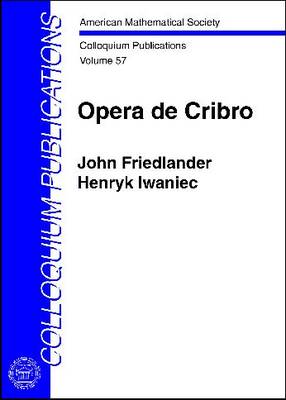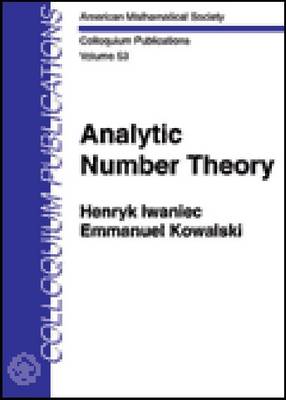Colloquium Publications
2 total works
This is a truly comprehensive account of sieves and their applications, by two of the world's greatest authorities. Beginners will find a thorough introduction to the subject, with plenty of helpful motivation. The more practised reader will appreciate the authors' insights into some of the more mysterious parts of the theory, as well as the wealth of new examples. No analytic number theorist should be without this volume, but it will not have a place on my bookshelves--it will be permanently on my desk! --Roger Heath-Brown, University of Oxford, Fellow of Royal Society . This is a comprehensive and up-to-date treatment of sieve methods. The theory of the sieve is developed thoroughly with complete and accessible proofs of the basic theorems. Included is a wide range of applications, both to traditional questions such as those concerning primes, and to areas previously unexplored by sieve methods, such as elliptic curves, points on cubic surfaces and quantum ergodicity. New proofs are given also of some of the central theorems of analytic number theory; these proofs emphasize and take advantage of the applicability of sieve ideas. The book contains numerous comments which provide the reader with insight into the workings of the subject, both as to what the sieve can do and what it cannot do. The authors reveal recent developments by which the parity barrier can be breached, exposing golden nuggets of the subject, previously inaccessible. The variety in the topics covered and in the levels of difficulty encountered makes this a work of value to novices and experts alike, both as an educational tool and a basic reference.
Analytic Number Theory distinguishes itself by the variety of tools it uses to establish results. One of the primary attractions of this theory is its vast diversity of concepts and methods. The main goals of this book are to show the scope of the theory, both in classical and modern directions, and to exhibit its wealth and prospects, beautiful theorems, and powerful techniques. The book is written with graduate students in mind, and the authors nicely balance clarity, completeness, and generality. The exercises in each section serve dual purposes, some intended to improve readers' understanding of the subject and others providing additional information. Formal prerequisites for the major part of the book do not go beyond calculus, complex analysis, integration, and Fourier series and integrals. In later chapters automorphic forms become important, with much of the necessary information about them included in two survey chapters.

